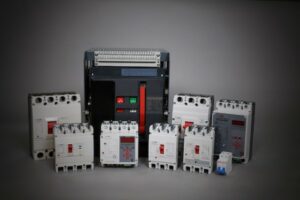Relay vs. Circuit Breaker: Key Differences and Why Both Must Be Tested
Relay vs. Circuit Breaker: Understanding Their Role in Protection Systems
In substations and industrial power systems, relays and circuit breakers form the backbone of protection and control. But while both devices respond to abnormal electrical conditions, their functions are entirely different—and understanding that difference is critical for engineers in testing and maintenance.
What is a Relay? The Brain of the System
A protection relay continuously monitors variables like current, voltage, or frequency. When it detects a fault (e.g., short-circuit, overload, earth fault), it sends a trip signal to a circuit breaker. However, it doesn’t interrupt the circuit by itself.
Modern numerical relays are highly configurable and require rigorous validation. A protection relay tester like the Quasar or Mentor 12 enables engineers to simulate fault conditions and ensure the relay responds within the correct time margins.
What is a Circuit Breaker? The Muscle That Acts
The circuit breaker physically opens the electrical circuit to isolate the fault. It must act quickly and reliably. Unlike fuses, breakers are reusable and require mechanical integrity to operate correctly under real fault conditions.
Testing circuit breakers involves checking timing, movement, and contact behavior. Devices like the Raptor or Prime 600 are essential tools to validate mechanical response and coordination with the relay.
Comparison Table: Relay vs. Circuit Breaker
| Feature | Relay | Circuit Breaker |
|---|---|---|
| Function | Detects anomalies and sends trip signal | Opens the circuit to interrupt current |
| Operation | Logic and signal-based | Mechanical, high-power switching |
| Role | Sensing and decision-making | Execution and physical isolation |
| Action Type | Indirect | Direct |
| Test Equipment | Relay test sets (e.g., Quasar, Mentor 12) | Switchgear testers (e.g., Raptor, Prime 600) |
| Failure Impact | Fault undetected or false trip | Fault not cleared, equipment damage possible |
| Maintenance | Calibration, setting validation | Mechanical checks, timing validation |
| System Validation | Secondary injection tests, logic analysis | Timing analysis, motion tests, primary injection |
Why You Must Test Both—Together
Protection systems don’t work in silos. Even if each element (relay and breaker) is tested separately, system-level coordination must be verified using primary injection kits like the Raptor. These simulate real fault currents through the entire protection chain: from CTs to relays and breakers.
Conclusion: Two Roles, One Mission—Protection
A relay without a breaker is powerless. A breaker without a relay is blind. Only together—and only through proper testing—can they deliver the protection your power systems demand.


